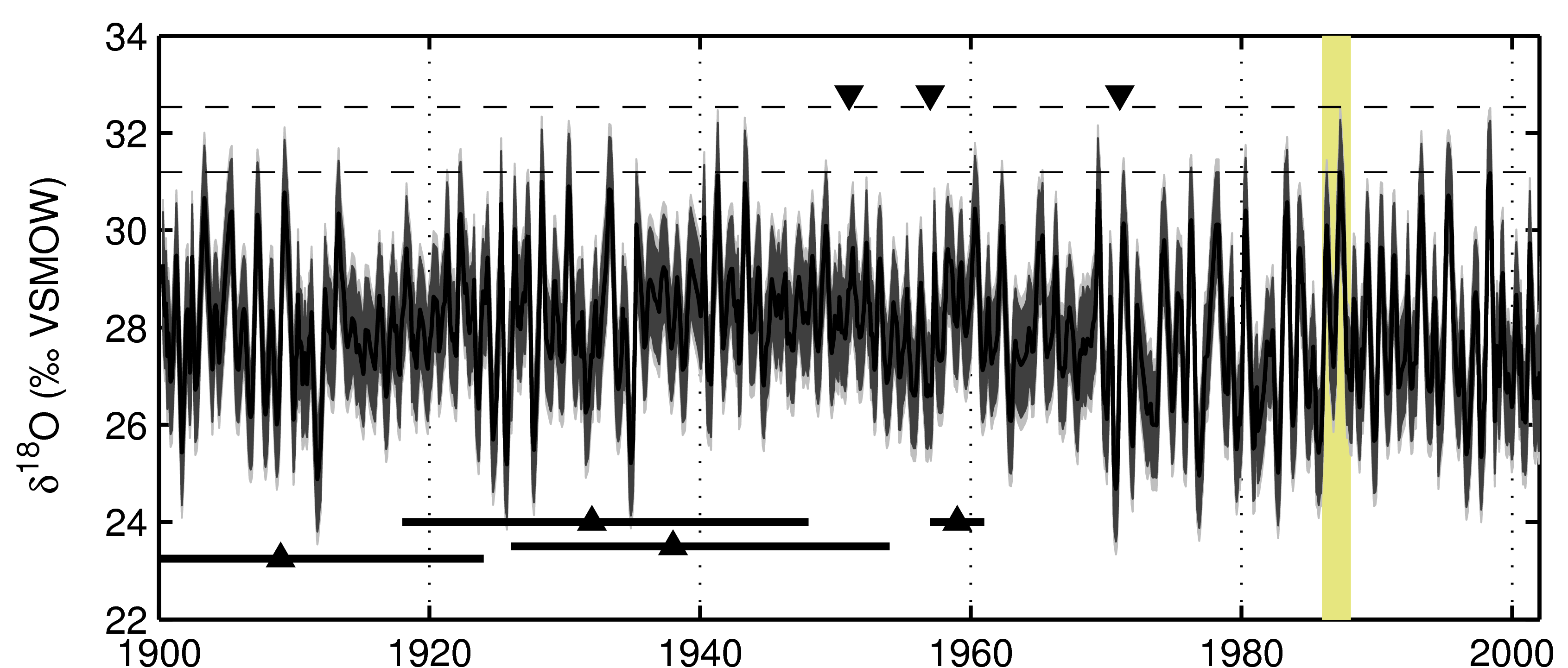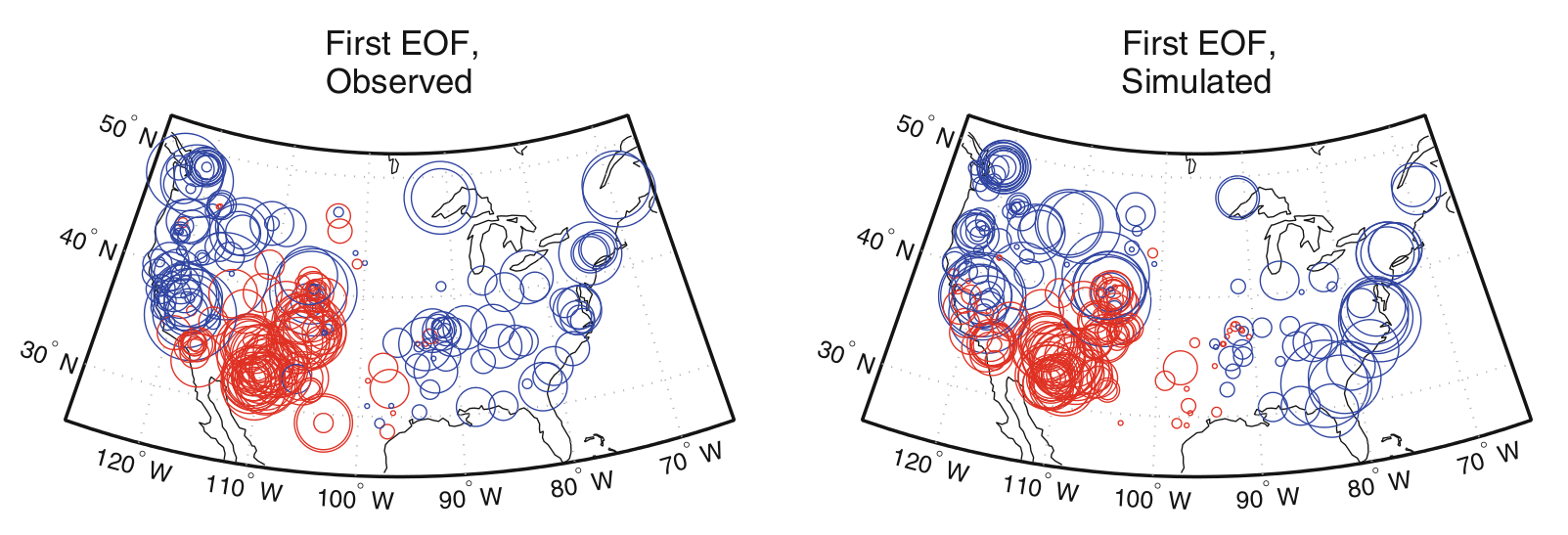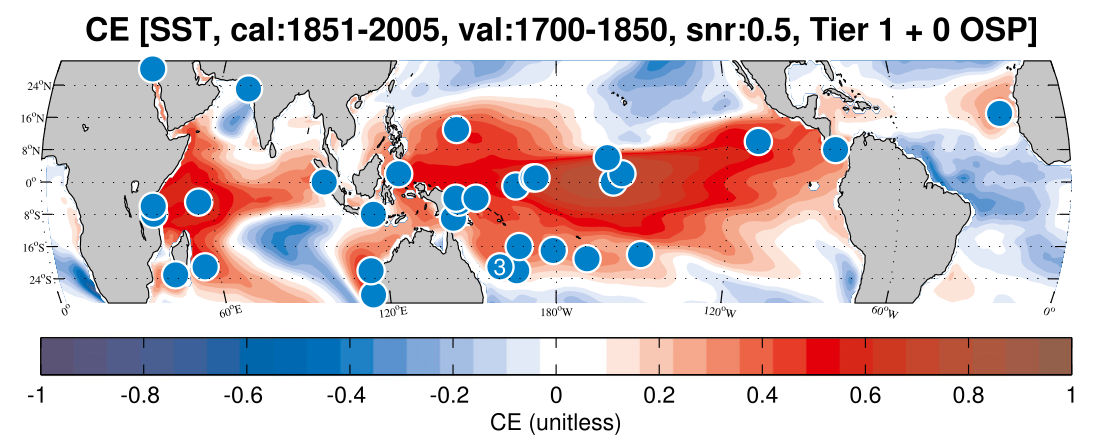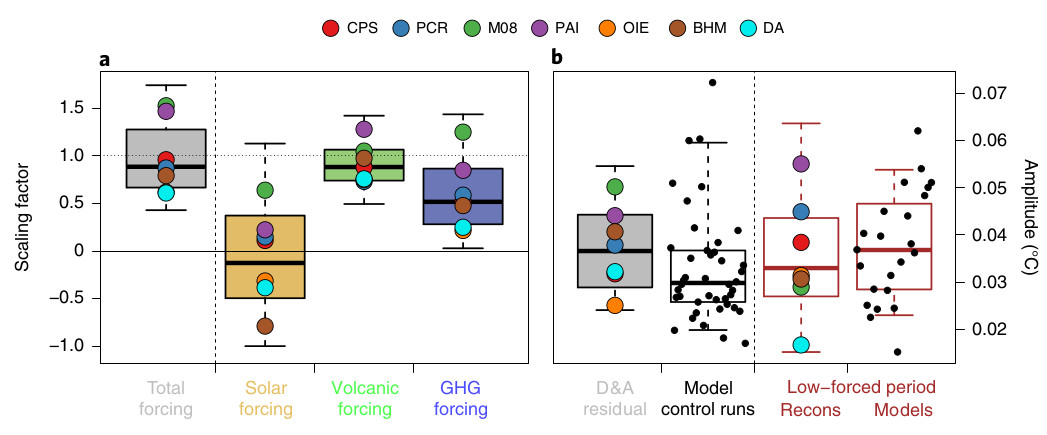
Paleoclimatology: I am particularly interested in placing current and future climate variability and change within the context of the past. Are there well-defined and predictable cycles and patterns, driven by unique physical mechanisms on timescales from decades to centuries? Or do the oceans, land surface, biota, ice and stratosphere simply integrate and retain a "memory" of well-understood forcing mechanisms underlying month-to-month and year-to-year variations? The answer to this question is important for the development and testing of probabilistic and regional climate change projections and uncertainty estimates into the 21st century.
Our perspective on this problem is from paleoclimatic observations, data modeling, reconstruction, synthesis and comparison with realistically forced climate and global change simulation ensembles.
Climate and Global Change: How will current climate forcing create environmental and ecosystem change? We also work with biogeochemists, geologists, civil engineers and marine ecosystems specialists to identify and forecast patterns in marine ecosystem stress indicators; characterize methane fluxes, sources and sinks, and analyze, interpret and model patterns of pollution dispersion in air and soil.
Our collaborators in these activities are at UMD, Columbia/LDEO, UA, WVU, NOAA, USDA, NIWA, Univ Auckland, Univ. Bern, Univ. Edinburgh, and come from across the global PAGES network.
Student and postdoctoral opportunities: Please contact me to discuss projects in paleoclimatology and global change! I will want to hear about your motivation and your research, skills and career goals; please attach a resume or CV in pdf format. More about me is here.
Data acquisition
Development of high resolution proxy climate observations from regions sensitive to various phenomena of interest. We have primarily focused on the tropics and coupled ocean-atmosphere dynamics associated with ENSO, but we also collaborate on physiological process studies and developing records from all over the world. More about the Stable Isotope Laboratory is here.

Proxy system modeling
Modeling of the processes by which environmental conditions are sensed by proxy systems and imprinted within the archives on which we make paleoclimatic observations. We are using these models as diagnostic tools, uncertainty quantification and as data models for paleoclimate data assimilation. Now thinking about how we can use machine learning to build empirically derived but scientifically constrained data models for tree-ring width observations.

Paleoclimate reconstruction
Reconstruction of regional and global climate fields, phenomena and indices, using Bayesian and objective analyses; optimal observing network design. Now working to develop data models for marine records to be assimilated into an ENSO forecast model.

Paleoclimate synthesis
In combination with realistically forced paleoclimatic simulations, identification of principal mechanisms by which the actual climate can be inferred to have varied in the past (and into the future). Now working on the detection and attribution problem over the Common Era via a large ensemble of isotope-enabled simulations and data modeling of a large multiproxy target dataset.
